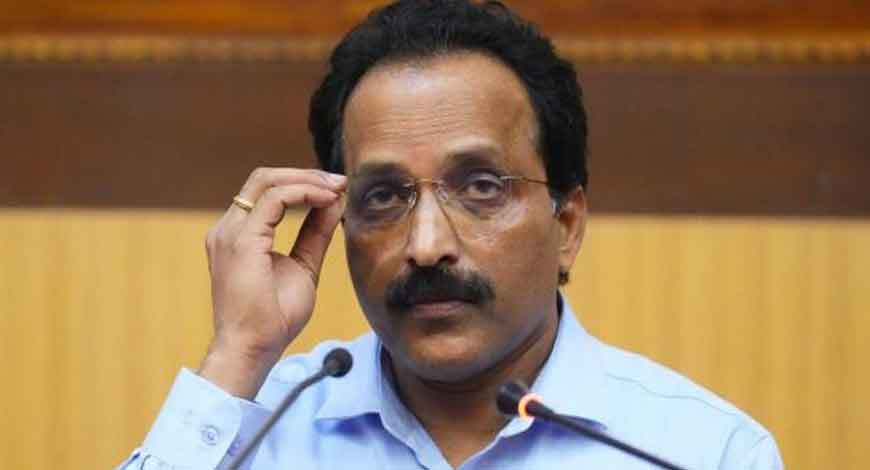As India moves toward opening a key spectrum band for next-generation Wi-Fi services, the government is treading cautiously over demands to raise the power limit allowed for license-free use of the devices in the band.
The matter concerns the amount of energy—or power—that a Wi-Fi device uses to transmit its signal over radio frequencies. Higher power means the signal is stronger, allowing it to travel farther, pass through walls and other obstacles more effectively, and maintain a stable connection over a wider area.
Higher power is especially important for next-generation applications that require high-speed, low-latency connections across larger spaces. But too much power can cause interference, so the government sets limits depending on how and where the device is used (like indoors vs outdoors).
Big Tech and broadband firms such as Meta, Sony, Google, and Apple, through their associations, are pushing for higher transmission power to support faster, wider Wi-Fi coverage and better experience to consumers.
But officials warn that such changes to power limit could risk interference with existing satellite, broadcasting, and fixed communication services operating in the band.
The debate reflects growing tension between expanding digital connectivity and safeguarding critical legacy infrastructure.
“The industry has asked for increasing the power limits. The only concern is the interference with the incumbents in the band. The band is used for satellite-based applications, teleports, cable TV and broadcasting services, which supports the lives of many people,” a government official said.
Continuation of the current low power levels for licence-free use of 6GHz band (in the range 5925-6425 MHz) have therefore been recommended to avoid any possible interference, the official added.
“Industry comments on the feasibility of increasing power limits are currently under review,” a second government official said. “The immediate priority is to finalize the rules and open up the band for use. The need for higher power levels can be considered later, based on further studies.”
Draft rules
On 16 May, the department of telecommunications (DoT) released the draft rules for industry consultation, paving the way for licence-free use of a portion of the key 6GHz (5925-6425 MHz) spectrum.
The band is crucial for providing high-speed Wi-Fi and supporting the next-generation gadgets such as Sony PlayStation, and augmented and virtual reality devices like Meta Ray-Ban smart glasses. The stakeholders were given 30 days to respond to the draft rules.
Communications minister Jyotiraditya Scindia said on Tuesday the rules for licence-free use of the 6GHz band will be out before 15 August.
In the draft rules, the government proposed the use of low power and very low power wireless access system in the band.
The power emission levels have been kept at 5 dBm per MHz for indoor Wi-Fi devices, with a maximum total power of the antenna at 30 dBm. For outdoor devices, the DoT has called for using very low power emission levels at -5 dBm, with a maximum power emission level at 14 dBm.
Decibel-milliwatts, or dBm is used to measure power levels, especially in wireless communication like Wi-Fi, Bluetooth, and mobile signals. In wireless systems, higher dBm means stronger signals.
Currently, the frequency band 6425-6435 MHz, 6450-6485 MHz, 6600-6640 MHz, 6664-6725 MHz, and 7010-7025 MHz bands are being used by satellite earth stations for uplink operations at certain locations.
The government has asked the Indian Space Research Organisation to refrain from launching new satellites in the 6425-7025 MHz range. Similarly, telecom operators, which have been given the upper portion of the 6GHz band (6425-7125 MHz), will be required to implement protective measures to minimize interference, the second official added.
“What we have asked for is a minimal increase in the power limit and that does not disrupt existing services,” said Paramjit Singh Puri, director membership at Wi-Fi Alliance. The Alliance represents over 900 companies from across the globe including 50 of the world’s largest telecom operators. It counts companies such as Apple, Sony, Meta, Samsung, Qualcomm, Intel, Dell, as its members.
Seeking higher power limits
Wi-Fi Alliance has asked DoT to consider revising power limits for very low power outdoor devices to a maximum of 1 dBm/MHz and a total power of 14 dBm. For low-power indoor devices, the alliance has asked for a maximum of 11 dBm/MHz with a total power of 30 dBm.
“A study was earlier conducted by the telecom department and the finding came out that Wi-Fi and satellite services do not interfere,” Puri said, adding that increasing the power limits is key to advanced use-cases like virtual or augmented reality (VR/AR), medical applications, location and tracking, safety and productivity and artificial intelligence.
For example, AR/VR use cases will include training for life-saving medical procedures, assist visually impaired Indians, and new therapies for patients suffering from memory disorders, post-traumatic stress disorder, and addiction.
“The higher data rates enabled by higher power limits for VLP (very low power) devices will also facilitate uses like high-definition video that will have target data rates exceeding 2 Gbps, wireless gaming with bi-directional,” he said.
Companies such as Sony and Meta, through their associations continuously urged the government to open the 6GHz band for licence free use, through various representations. Meta launched its Meta Ray-Ban smart glasses in India starting ₹29,900. These will be able to perform better once the proposed portion of the 6GHz band is delicenced, analysts said.
Similarly, Sony has not launched its PlayStation 5 Pro in India in the absence of the 6GHz band. “PS5 Pro will not be available in some countries (which currently includes India) where the 6 GHz wireless band used in IEEE 802.11be (Wi-Fi 7) has not yet been allowed,” the company had said in a statement.
Better for Wi-Fi 7
Tech companies said higher power levels are also necessary to support Wi-Fi 7 enhanced data throughput capabilities to reach beyond one or two rooms without the need for signal extenders or additional equipment. Wi-Fi 7 is the latest generation of Wi-Fi technology. It’s designed to be much faster, more efficient, and lower-latency than previous versions like Wi-Fi 6 or 6E.
Satya N. Gupta, former principal advisor at the Telecom Regulatory Authority of India (TRAI) said, “Power reduction is not a solution as this could kill the potential of the devices and use-cases that will come up in the licence-free portion of the 6GHz band.”
According to Gupta, there is a technology, called automatic frequency coordination (AFC), which can mitigate interference. AFC is used in wireless communication to automatically manage and control which frequencies a device can use, especially in shared or sensitive frequency bands. It makes sure that powerful outdoor Wi-Fi devices don’t interfere with other important users of the same radio frequencies—such as weather radars, satellite systems, or military equipment.
Another industry association, the ITU-APT Foundation of India (IAFI) too has asked for an increase in power limit for the devices by over 6dB.
“This will be important for more robust performance both for indoor operation as well as for wearable devices,” Bharat B. Bhatia, president of IAFI told the DoT. IAFI, however, does not want the government to delay the issuance of final notification owing to such proposals.
“While the proposed PSD (Power Spectral density) levels are consistent with FCC (Federal Communications Commission) regulations, increasing the same by +6dB will align the regulations with most countries and not just FCC,” Bhatia said.
The industry body represents companies such as Hughes, Eutelsat OneWeb, Amazon, Dhruva Space and Airtel.
Among the delicensers
Globally, more than 84 countries, including the US, have delicensed at least 500 MHz of the 6GHz band for Wi-Fi and innovation.
The draft rules issued by the government assume significance as telecom operators, and technology companies such as Google, and Meta, were at loggerheads over the 6GHz band. Technology companies wanted the band to be delicensed and provided free to use to improve Wi-Fi services, while telecom operators wanted the band for 6G services.
The government also recently approved the 600MHz out of the 1200MHz spectrum available in the 6GHz band for telecom operators through auction. For operators, the upper portion, approved for auction, is in the range of 6425-7125 MHz. The band is essential for the upcoming 6G services.
Among the telecom operators, interestingly, Reliance Jio, however, is also supporting the licence-free use of the band. The stance does not align with the Cellular Operators Association of India (COAI), which represents the major private telecom operators.
“Operators will benefit more from the licence-free use of the 6GHz band. This is because they can use Frugal 5G, especially in the rural areas. The companies can offload the mobile traffic on the Wi-Fi and can also save on spectrum usage by not using the 5G spectrum in rural areas and instead use Wi-Fi,” Gupta added.
Frugal 5G refers to providing affordable, high-speed internet access, particularly in rural and underserved areas, by optimizing 5G technology for lower costs and simpler deployment.
Queries sent to the Cellular Operators Association of India, Reliance Jio and DoT did not elicit any response till press time. LiveMint









